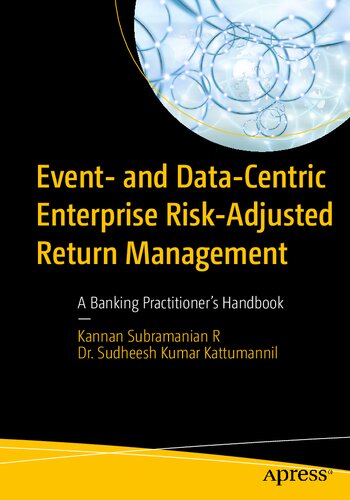

Most ebook files are in PDF format, so you can easily read them using various software such as Foxit Reader or directly on the Google Chrome browser.
Some ebook files are released by publishers in other formats such as .awz, .mobi, .epub, .fb2, etc. You may need to install specific software to read these formats on mobile/PC, such as Calibre.
Please read the tutorial at this link: https://ebookbell.com/faq
We offer FREE conversion to the popular formats you request; however, this may take some time. Therefore, right after payment, please email us, and we will try to provide the service as quickly as possible.
For some exceptional file formats or broken links (if any), please refrain from opening any disputes. Instead, email us first, and we will try to assist within a maximum of 6 hours.
EbookBell Team

4.3
58 reviewsTake a holistic view of enterprise risk-adjusted return management in banking. This book recommends that a bank transform its siloed operating model into an agile enterprise model. It offers an event-driven, process-based, data-centric approach to help banks plan and implement an enterprise risk-adjusted return model (ERRM), keeping the focus on business events, processes, and a loosely coupled enterprise service architecture.
Most banks suffer from a lack of good quality data for risk-adjusted return management. This book provides an enterprise data management methodology that improves data quality by defining and using data ontology and taxonomy. It extends the data narrative with an explanation of the characteristics of risk data, the usage of machine learning, and provides an enterprise knowledge management methodology for risk-return optimization. The book provides numerous examples for process automation, data analytics, event management, knowledge management, and improvements to risk quantification.The book provides guidance on the underlying knowledge areas of banking, enterprise risk management, enterprise architecture, technology, event management, processes, and data science. The first part of the book explains the current state of banking architecture and its limitations. After defining a target model, it explains an approach to determine the "gap" and the second part of the book guides banks on how to implement the enterprise risk-adjusted return model.
What You Will Learn